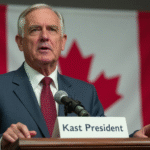Background on Key Figures and Context
Claudia Sheinbaum, the President of Mexico, and teachers from the National Coordination of Education Workers (CNTE) find themselves in a stalemate, despite the Mexican government conceding some of the teachers’ demands. The dispute revolves around a pension system, with the teachers pushing for a return to an earlier model based on years of service rather than age.
The Pension Promise
During her campaign, Sheinbaum pledged to reverse the 1997 and 2007 pension reforms, stating they left state workers and Seguro Social affiliates with meager pensions. She vowed to “undo the pension regime approved by Zedillo and Calderón,” which she described as neoliberal.
Relevance of Former President Andrés Manuel López Obrador
Former President Andrés Manuel López Obrador had harshly criticized the private pension system (afores). Although his political discourse remains unchanged, his administration did not eliminate the private pension system but rather strengthened it. The 2020 reform introduced modifications to improve IMSS and ISSSTE workers’ pensions under individual accounts.
Key Demands and Government Concessions
- Teachers’ Demands: The teachers are asking for a return to the 2007 pension system based on years of service (28 for women and 30 for men) instead of age.
- Government Concessions: The government has offered several concessions, including freezing the retirement age for teachers and condoning FOVISSSTE credits. However, these concessions come at a high cost to public finances.
Costs of Government Concessions
Sheinbaum acknowledged during her morning press conference that freezing the teacher retirement age would cost approximately 72 billion pesos. Adding other concessions, the total could surpass 100 billion pesos. Experts warn that the teachers’ demands lack economic viability, and Sheinbaum herself has publicly stated this.
Significant Salary Increase
The 9% salary increase for teachers, with an additional 1% starting in September, is the most substantial raise in at least the last 40 years, according to Education Secretary Mario Delgado. The cost of freezing FOVISSSTE credits remains unknown, but it adds to the financial burden.
The Deadlock
The core of the conflict lies in the teachers’ desire for a government-subsidized pension system, while Sheinbaum has acknowledged that reversing the 2007 ISSSTE law would negatively impact public finances. With numerous costly social programs at stake, it seems unlikely that the Mexican government will concede to the teachers’ demands.
Key Questions and Answers
- What are the teachers demanding? Teachers want a return to the 2007 pension system based on years of service rather than age.
- What concessions has the government offered? The government has agreed to freeze the retirement age for teachers and condoned FOVISSSTE credits.
- Why is there a deadlock? Teachers seek a government-subsidized pension system, while the government is concerned about the financial impact of reversing the 2007 ISSSTE law and maintaining essential social programs.






